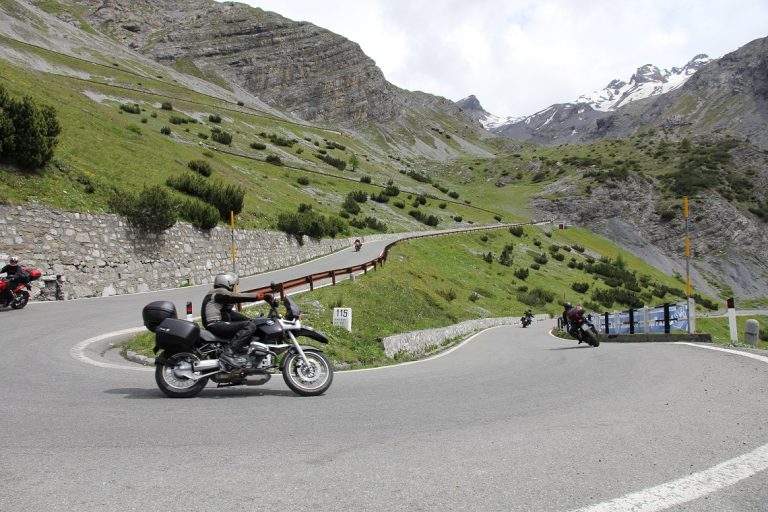Negotiating steep alpine bends can be a tricky task on a fully-loaded adventure bike, but Glynn Garrad has all the tips you’ll need
Every year thousands of adventure bikers head over to Europe on their summer tours, and in particular to the Alps. The draw of spectacular scenery, usually good weather and the opportunity to ride some of the world’s best roads are just too much to resist.
But when you finally get there, the switchbacks of an Alpine pass can prove to be quite daunting if you’ve never conquered one before, especially if your bike is heavily laden. So what’s the best way to tackle these steep, twisty trails of tarmac that make their way up the mountainsides?
One of the most important things to do when travelling on twisty mountain roads is to look at the view. You may never get the chance to ride that road again, but having a fully loaded bike creates and exaggerates problems, you have to learn to control that weight, not just from left to right but forwards and backwards as well.
Grabbing the front brake mid-corner is not the best thing to be doing on any bend, but on a tight, twisty mountain pass it can be the difference between buying a round of drinks or buying the whole evening to thank those who picked you up.
Look around, look where you are going, and try timing your arrival at the bend when there is no one else negotiating it. This way you can avoid meeting a vehicle taking up a lot more space than you think they need, and you can maintain your chosen speed, which is ideal especially when going uphill. Timing your arrival in this way can also allow you to use more road safely if needed.
Set the bike up before the bend. Get your speed down on the straights and select the correct gear for the speed you’re travelling at. You want to be on the accelerator before you even start to lean the bike over. Not necessarily accelerating, but at least taking up the throttle slack to avoid any throttle snatch in the bend.
When it comes to descending a pass, it is easy to rely on your brakes all the way down, but you run the risk of overheating them, especially on a heavy bike. Use both your front and back brake (mostly the front) to get your speed down, then select a gear that will help you maintain that trajectory.
On very steep hills it may be necessary to select first to stop the bike from picking up speed. This stops your brakes from getting too hot. Staying in low gear means you will only need to apply the brakes briefly.
It may be necessary to slow a bit more than you would normally think for a very tight, steep bend. When descending on a fully loaded bike, it is easy to pick up speed in the corner, so allow for that. If you need to check your increasing speed, you can gently apply the back brake.
Going uphill through a tight bend, make sure you have your gear sorted. Use the accelerator smoothly, some bends can be steep enough to cause the front end to go light on a fully packed bike. So remember, look around, set up early and don’t rush. You’re on holiday after all!

